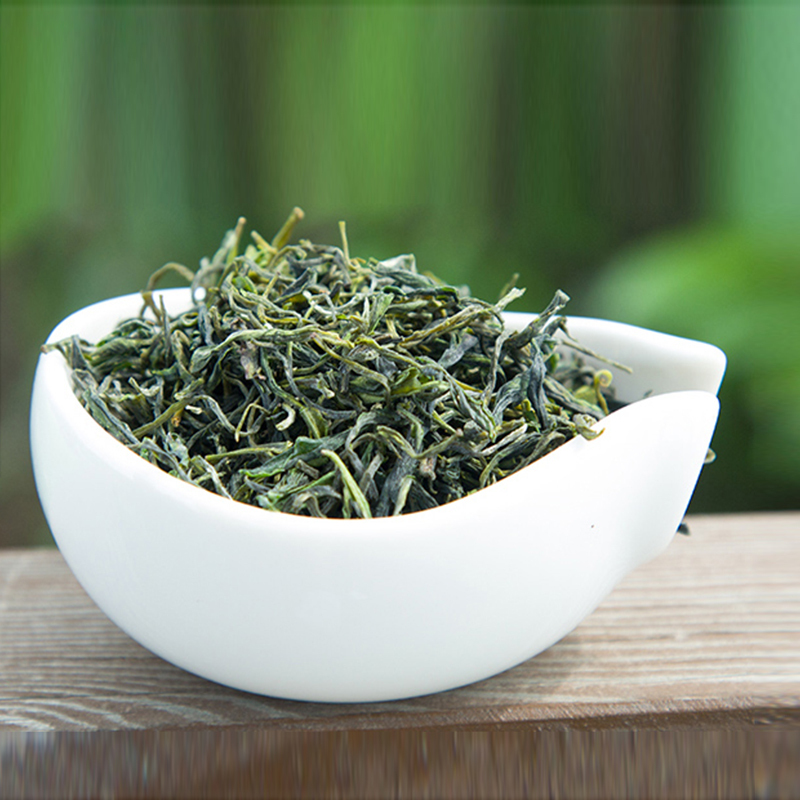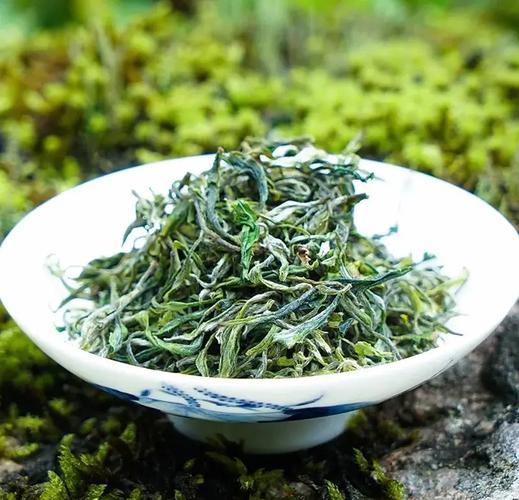Nestled in the mist-clad mountains of Shitai County, Anhui Province, 石台富硒茶 (Shítài Fùxī Chá) emerges as a rare gem among China’s green teas. Celebrated for its selenium-enriched composition and centuries-old heritage, this tea embodies the harmony between nature’s bounty and human craftsmanship. Let us explore its essence through the lens of history, terrain, and wellness.

Origins & Legendary Heritage
Shitai Selenium-Rich Tea’s story begins in the Ming Dynasty, when local tea masters cultivated wild tea trees in the region’s virgin forests. Legend has it that monks from nearby Jiuhua Mountain prized this tea for its ability to enhance meditation, dubbing it the “tea of enlightenment.” The tea gained prominence in the Qing Dynasty, with poet Xu Wei lauding its flavor in verses. In 1985, a soil survey revealed Shitai County’s unique selenium-rich geology, leading to the discovery of selenium-enriched tea leaves. Today, it stands as a National Geographical Indication Product, a testament to its legacy.
Terroir: The Selenium-Rich Eden
The tea gardens of Shitai occupy a UNESCO-designated biosphere reserve, where:
- Altitude: 500–1,000 meters above sea level, shrouded in year-round fog.
- Soil: Volcanic loam with selenium content up to 4.4 mg/kg, far exceeding global averages.
- Climate: Mild temperatures, abundant rainfall, and sharp day-night temperature shifts.
These conditions, combined with pristine mountain springs, result in leaves imbued with selenium—a trace mineral critical for human health.
Craftsmanship: Ancient Wisdom Meets Modern Science
The production of Shitai Selenium-Rich Tea blends tradition with precision:
- Plucking: Only the tender bud and one leaf are harvested in early spring, ensuring peak freshness.
- Withering: Leaves are spread on bamboo mats to reduce moisture gently.
- Fixation (Killing Green): Pan-fried in woks at 180–200°C to halt oxidation, preserving the tea’s vibrant color.
- Rolling: Leaves are shaped by hand into tight curls, releasing essential oils.
- Drying: Final roasting over charcoal locks in aroma and selenium content.
Aesthetic & Sensory Profile
When steeped, Shitai Selenium-Rich Tea unveils its unique character:
- Appearance: Leaves unfurl into emerald strips with silver tips.
- Liquor: Bright golden-green hue, reminiscent of mountain springs.
- Aroma: Fresh orchid notes with hints of chestnut and wildflowers.
- Taste: Smooth, vegetal freshness transitions to a lingering sweetness, with a subtle selenium-infused finish.
Brewing Rituals
To honor its essence:
- Water: Use soft, spring water heated to 85–90°C (185–194°F).
- Ratio: 3 grams of tea per 150 ml (1:50 tea-to-water ratio).
- Vessel: Glass cup or porcelain gaiwan to admire the unfurling leaves.
- Infusion: First steep for 2 minutes; extend subsequent brews by 1 minute (up to 3 infusions).
Authenticity & Grading
Genuine Shitai Selenium-Rich Tea is distinguished by:
- Appearance: Uniform, twisted leaves with red stems.
- Aroma: Earthy, pine-like fragrance with subtle smokiness.
- Liquor: Clear amber-green hue.
- Infused Leaves: Dark emerald-green, slightly brittle.
Graded into Special, Premium, and Standard tiers based on leaf uniformity, pluck standard, and selenium content. Special-grade tea, harvested from uncultivated trees, commands 150–300 per 100 grams, while Standard grades range from 60–150.
Healthful Alchemy
Rich in selenium, polyphenols, and vitamins, Shitai Selenium-Rich Tea offers:
- Antioxidant Power: Combats free radicals linked to aging and cancer.
- Cardiovascular Support: Lowers cholesterol and improves blood circulation.
- Detoxification: Aids in eliminating heavy metals from the body.
- Immune Boost: Selenium enhances lymphocyte activity and antibody production.
Cultural Resonance
Beyond its cup, Shitai Selenium-Rich Tea is woven into local folklore and wellness traditions. Villagers have long relied on its medicinal properties to treat colds and fatigue, while poets have likened its aroma to “the breath of ancient forests.” Today, it remains a symbol of Anhui’s ecological heritage, a bridge between wilderness and civilization.
In every sip of Shitai Selenium-Rich Tea, one encounters not just a tea, but the spirit of China’s sacred mountains—a tribute to the harmony between humanity and the wild.



